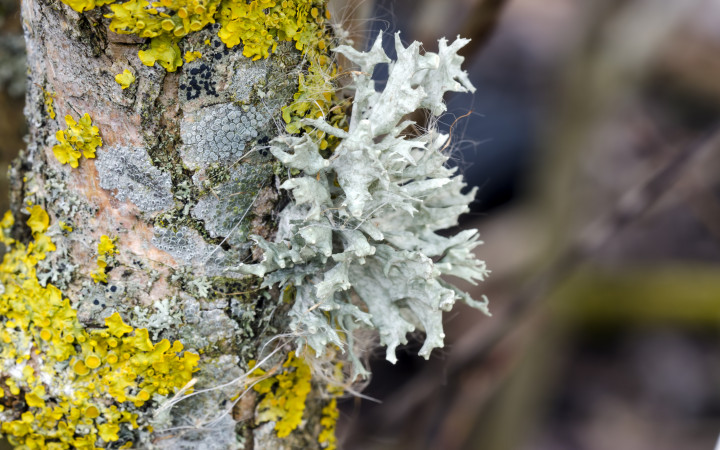Today’s Wonder of the Day was inspired by Autry. Autry Wonders, “What is lichen?” Thanks for WONDERing with us, Autry!
Macaroni and cheese. Peanut butter and jelly. Chicken and waffles. Chips and salsa. Some things go together so well, you can’t think of why one would exist without the other. Today, we’re learning about another such pairing—fungi and algae!
Wait. What? Fungi and algae? Maybe that wasn’t quite what you expected, but they’re still a great pair. In fact, their partnership has a name of its own. It’s called a lichen.
Many people think lichens look like plants. However, scientists say they’re part of the fungus kingdom. That’s because lichens are composite organisms that always include at least one fungus and one alga. In some cases, three separate organisms might come together to form a lichen.
Why do fungi and algae go so well together? They have a mutually symbiotic relationship. You may have heard that term in school. It means that each of them benefits from their partnership. The fungus helps the alga survive outside of water. It also provides protection from sunlight. For its part, the alga uses photosynthesis to make food. This further helps the lichen to thrive.
Where are you most likely to find lichens growing? Just about anywhere! Experts believe there are about 15,000 species that can survive in a number of habitats. Many lichens prefer to live near coasts. That’s because they absorb water from the foggy climate. However, many varieties are very good at storing water and can thrive in drier areas. Lichens have been known to grow in deserts and even polar regions.
It’s common to spot lichens growing on tree bark. They can also survive on rocks. You might even see lichen growing on human-made objects, like houses and bridges. They grow very slowly as pieces of the lichen break off and start growing nearby. Still, these organisms can become rather large, as they may live for hundreds of years.
Some scientists find lichens very useful. For example, these organisms can tell us about the air quality of a region. Lichens grow best in places with healthy amounts of nitrogen, oxygen, and carbon. If lichens are growing, it’s a sign that the air quality is good. Lichens also make antibacterial and antiviral substances that are used in medicine.
Lichens are also an important part of their ecosystems. They play a role in soil creation. They also become food for many animals. In arctic regions, lichens are sometimes harvested by the Sámi people to feed their reindeer.
Have you ever seen a lichen? It’s common to spot them while exploring outside. Many people don’t give them a second thought, but others find them unique and interesting. The next time you’re on a walk with your family, look for one of these composite organisms—you never know where you might find one!
Standards: NGSS.LS1.A, NGSS.LS2.A, NGSS.LS2.B, NGSS.LS2.D, NGSS.LS4.D, CCRA.L.3, CCRA.L.6, CCRA.R.1, CCRA.R.2, CCRA.R.4, CCRA.R.10, CCRA.SL.1, CCRA.SL.2, CCRA.W.2, CCRA.W.4, CCRA.W.9, CCRA.L.1, CCRA.L.2,




